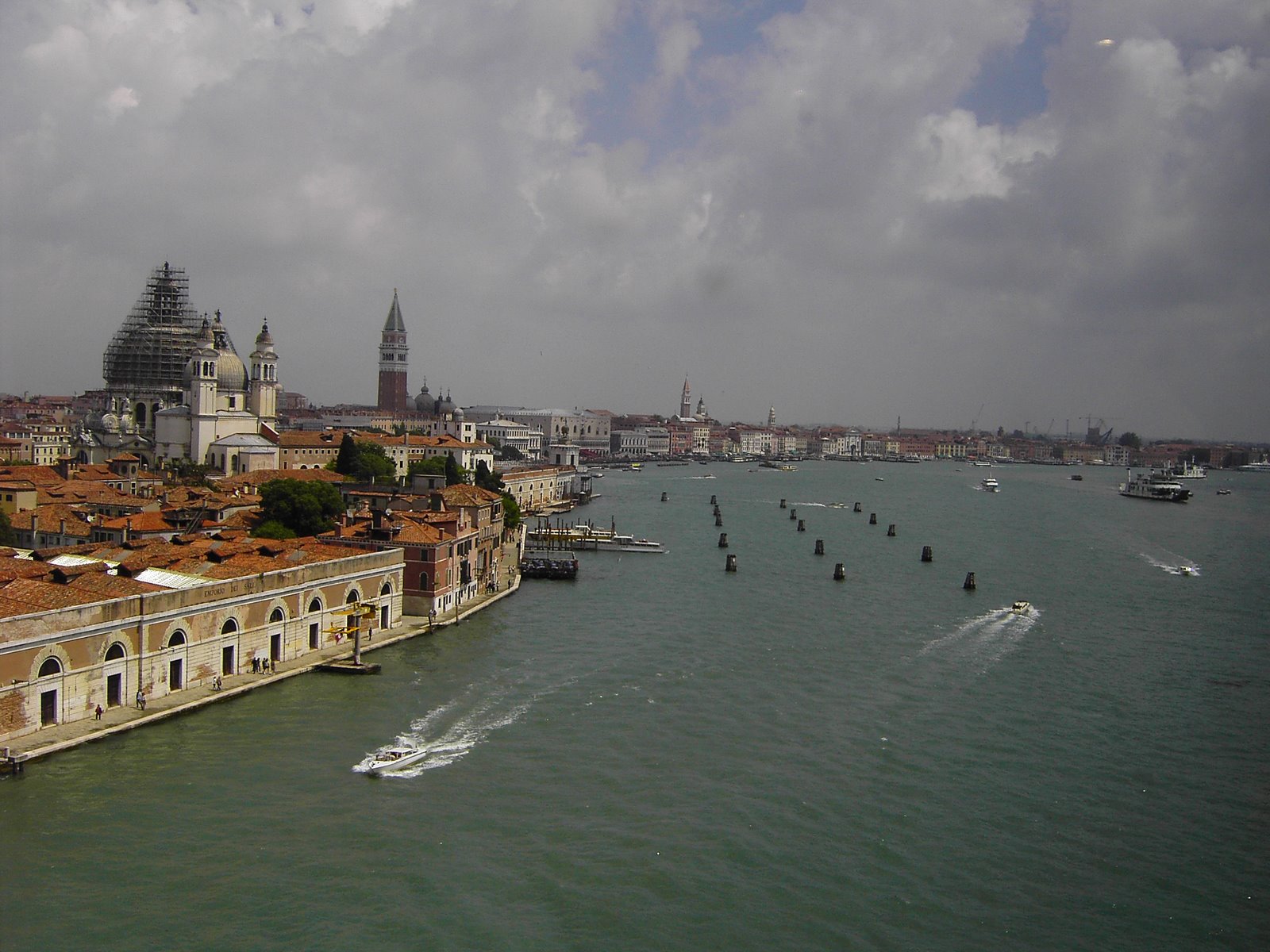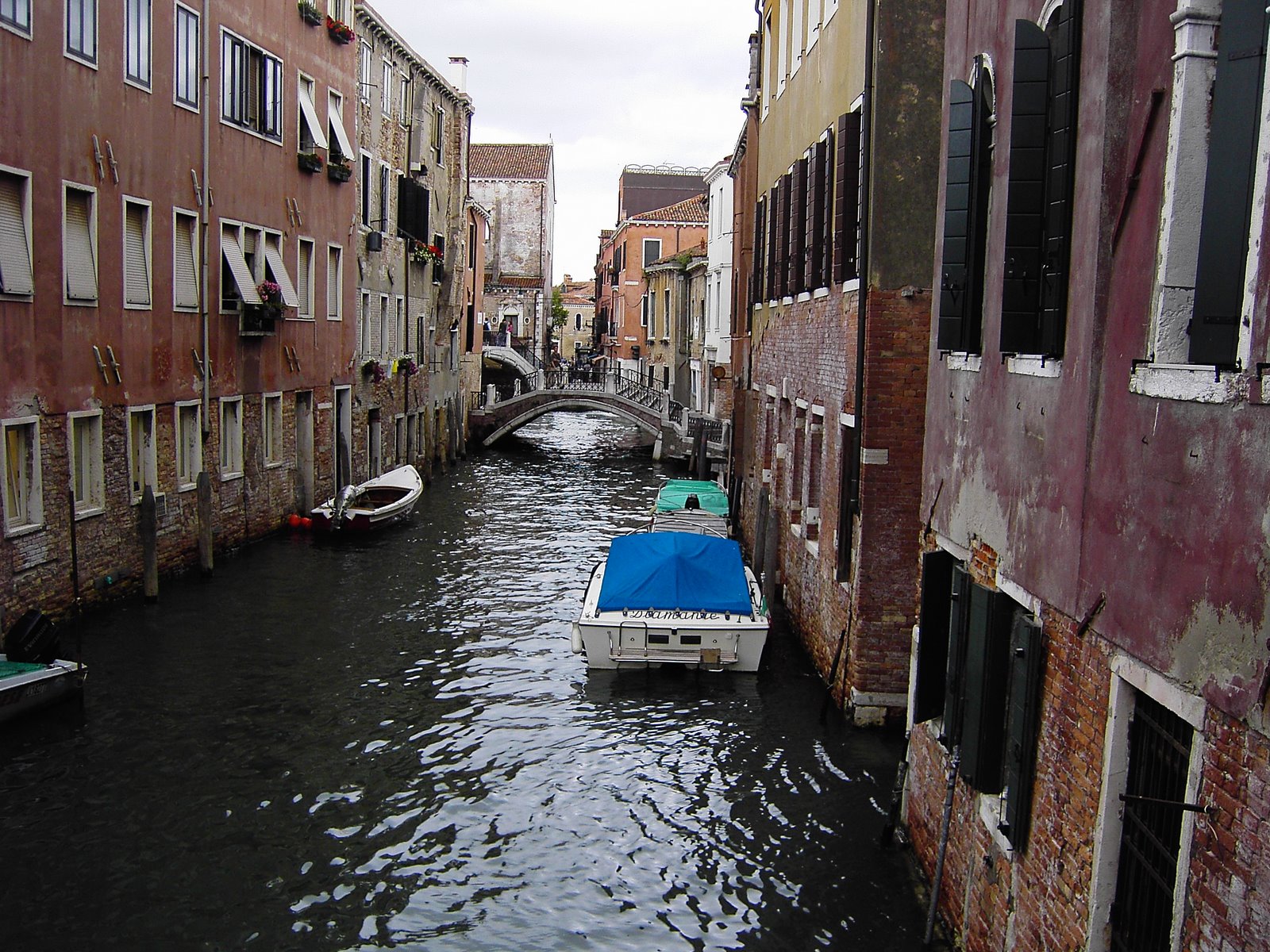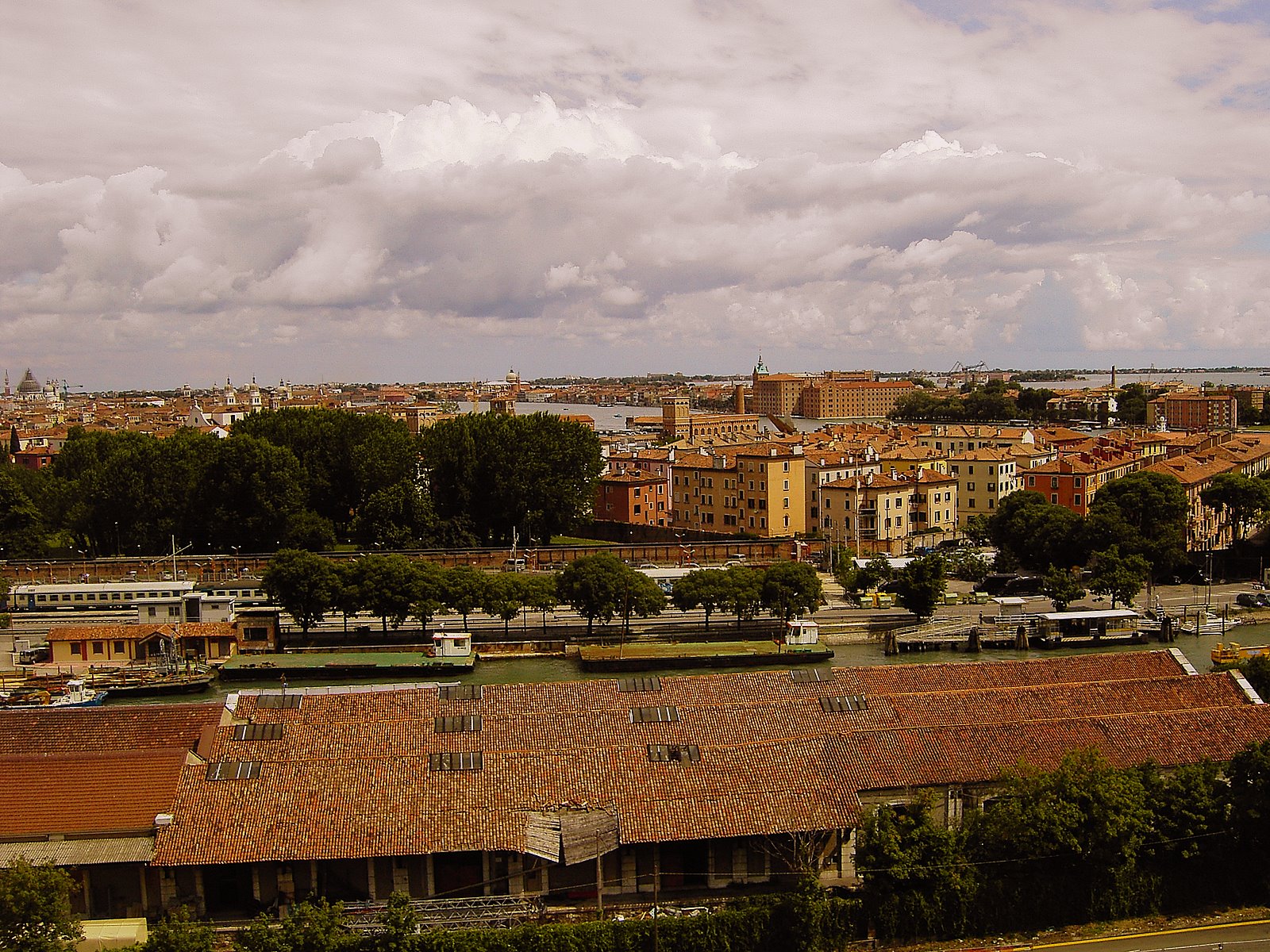Venice: A Vacation Destination For Hundreds of Years
The drawing accompanied one friar’s first-person account of a trip from Venice to Jerusalem and Egypt/https://public-media.si-cdn.com/filer/00/16/00167a8c-a1f7-4b2d-88c4-020531c82bd7/2020_jan10_veniceimage.jpg) This illustration of Venice accompanied a manuscript of one friar's journey from Venice to Egypt and Jerusalem. (Image of Venice supplied by the Florence, Biblioteca Nazionale Centrale, II.IV.101, fol. 1v. With permission of the Ministero per i beni e le attività culturali e per il turismo / Biblioteca Nazionale Centrale, Florence.)
This illustration of Venice accompanied a manuscript of one friar's journey from Venice to Egypt and Jerusalem. (Image of Venice supplied by the Florence, Biblioteca Nazionale Centrale, II.IV.101, fol. 1v. With permission of the Ministero per i beni e le attività culturali e per il turismo / Biblioteca Nazionale Centrale, Florence.)
Friar Niccolò da Poggibonsi began his travelogue with a prayer. Per a modern translation, he asked that God and all God’s saints “bestow their grace” so he might accurately describe all the holy sites, “in order and without misstep,” that he had visited over the past four years.
After departing Venice in 1346, the Franciscan friar ventured to Jerusalem, Damascus, Cairo and Alexandria, writes researcher Kathryn Blair Moore in the journal Renaissance Quarterly. Niccolò took notes on gesso tablets while he traveled, and when he returned to Venice in 1350, wrote down his full firsthand account. The oldest manuscript of the work and its illustrations, titled Libro d’Oltramare, now resides in the Biblioteca Nazionale Centrale in Florence.
It was here that Sandra Toffolo, a scholar of Renaissance Venetian history at Scotland’s University of St. Andrews, noticed an illustration showing the Italian city’s characteristic buildings, canals and gondolas. The illustration is the oldest drawing of Venice yet discovered, excluding maps, the oldest of which dates to 1330 and was created by Fra Paolino, another Venetian Franciscan friar.
“The discovery of this city view has great consequences for our knowledge of depictions of Venice,” says Toffolo in a statement. “It shows that the city of Venice already from a very early period held a great fascination for contemporaries.”
Niccolò took great care with his travelogue, taking measurements of landmarks in the Holy Land by counting paces or comparing them to the length of his arm. Every day, he recorded these observations in his tablets.
In addition to the Venice drawing, Niccolò’s account featured illustrations of elephants and architecture in Cairo, as well as the Dome of the Rock and the Temple of Solomon in Jerusalem. Niccolò was unique for his time in describing the journey in the vernacular, giving a new first-person perspective rather than relying on classic Latin descriptions.
Per the statement, small pinpricks seen on the Florentine manuscript indicate it was once widely circulated. To reproduce images, Renaissance copyists sifted powder over pinpricked paper, transferring the outlines of the scene onto a new page.
“The presence of these pinpricks is a strong indication that this city view was copied,” explains Toffolo. “Indeed, there are several images in manuscripts and early printed books that are clearly based on the image in the manuscript in Florence.”
Niccolò’s text became one of the most referenced Holy Land guidebooks in the early Renaissance—but only after it was translated and reprinted under different names. Published in German during the 15th century, it was then said to describe the pilgrimage of Gabriel Muffel, son of a Nuremburg patrician. In 1518, meanwhile, the first edition of an anonymous account titled Viaggio da Venetia al Sancto Sepolchro et al Monte Sinai, or Voyage From Venice to the Holy Sepulcher and to Mount Sinai, was published in Venice. Over the next 300 years or so, sixty more editions followed. The work was only credited to its original author in “due course,” according to the British Library.
The “City of Water” is located in northeast Italy, spanning 118 islands in the Venetian Lagoon. Buildings in Venice were constructed on wood piles driven into the mud, sand and clay layers under the lagoon. Many of the buildings in Venice still sit on these piles driven more than a thousand years ago. From a recent trip I have inserted a couple of pictures of the famed city.


The name is derived from the ancient people of Veneti that inhabited the region as of 10th century B.C. The city historically was the capital of the Venetian Republic. Venice has been known as the "La Dominante", "Serenissima", "Queen of the Adriatic", "City of Water", "City of Masks", "City of Bridges", "The Floating City", and "City of Canals". Luigi Barzini, writing in The New York Times, described it as "undoubtedly the most beautiful city built by man". Venice has also been described by the Times Online as being one of Europe's most romantic cities.
The city stretches across 117 small islands in the marshy Venetian Lagoon along the Adriatic Sea in northeast Italy. The saltwater lagoon stretches along the shoreline between the mouths of the Po (south) and the Piave (north) Rivers. The population estimate of 272,000 inhabitants includes the population of the whole Comune of Venezia; around 60,000 in the historic city of Venice (Centro storico); 176,000 in Terraferma (the Mainland), mostly in the large frazioni of Mestre and Marghera; and 31,000 live on other islands in the lagoon.
|
 | 
 |
While there are no historical records that deal directly with the obscure and peripheral origins of Venice, tradition and the available evidence have led several historians to agree that the original population of Venice consisted of refugees from Roman cities near Venice such as Padua, Aquileia, Treviso, Altino and Concordia (modern Portogruaro) and from the undefended countryside, who were fleeing successive waves of Germanic invasions and Huns. Some late Roman sources reveal the existence of fishermen on the islands in the original marshy lagoons. They were referred to as incolae lacunae ("lagoon dwellers"). The traditional founding is identified with the dedication of the first church, that of San Giacomo at the islet of Rialto (Rivoalto, "High Shore"), which is said to have been at the stroke of noon on 25 March 421.
The last and most enduring irruption in the north of the Italian peninsula, was that of the Lombards in 568, leaving the Eastern Roman Empire a small strip of coast in the current Veneto, and the main administrative and religious entities were therefore transferred to this remaining dominion, centered upon the Exarchate of Ravenna, the local representative of the Emperor in the East. The Venetian tradition of the islanders' aid to Belisarius was reported in early histories to explain the largely theoretical link to Ravenna, and to the Eastern Emperor. New ports were built, including those at Malamocco and Torcello in the Venetian lagoon. The tribuni maiores, the earliest central standing governing committee of the islands in the Lagoon, dated from c. 568.
|
|
 |  |
|
The classical Venetian boat is the gondola, although it is now mostly used for tourists, or for weddings, funerals, or other ceremonies. Many gondolas are lushly appointed with crushed velvet seats and Persian rugs. Less well-known is the smaller sandolo. The main transportation means are motorised waterbuses (vaporetti) which ply regular routes along the major canals and between the city's islands, and private boats. The only gondolas still in common use by Venetians are the traghetti, foot passenger ferries crossing the Grand Canal at certain points without bridges.
|
|
 |  |
| St Mark's Basilica (Italian: Basilica di San Marco a Venezia), the cathedral of Venice, is the most famous of the city's churches and one of the best known examples of Byzantine architecture. It lies on St Mark's Square, adjacent and connected to the Doge's Palace and has been the seat of the Patriarch of Venice, archbishop of the Roman Catholic Archdiocese of Venice since 1807. For its opulent design, gilded Byzantine mosaics, and its status as a symbol of Venetian wealth and power from the 11th century on, the building was known by the nickname Chiesa d'Oro ("church of gold"). |
|
|
Situated on the Adriatic Sea, Venice always traded with the Byzantine Empire and the Muslim world extensively. By the late thirteenth century, Venice was the most prosperous city in all of Europe. At the peak of its power and wealth, it had 36,000 sailors operating 3,300 ships, dominating Mediterranean commerce. During this time, Venice's leading families vied with each other to build the grandest palaces and support the work of the greatest and most talented artists. The city was governed by the Great Council, which was made up of members of the noble families of Venice. The Great Council appointed all public officials and elected a Senate of 200 to 300 individuals. Since this group was too large for efficient administration, a Council of Ten (also called the Ducal Council or the Signoria), controlled much of the administration of the city. One member of the great council was elected "Doge", or duke, the ceremonial head of the city, who normally held the title until his death.
The Venetian governmental structure was similar in some ways to the republican system of ancient Rome, with an elected chief executive (the Doge), a senate-like assembly of nobles, and a mass of citizens with limited political power, who originally had the power to grant or withhold their approval of each newly elected Doge. Church and various private properties were tied to military service, though there was no knight tenure within the city itself. The Cavalieri di San Marco was the only order of chivalry ever instituted in Venice, and no citizen could accept or join a foreign order without the government's consent. Venice remained a republic throughout its independent period and politics and the military were kept separate, except when on occasion the Doge personally headed the military. War was regarded as a continuation of commerce by other means (hence, the city's early production of large numbers of mercenaries for service elsewhere, and later its reliance on foreign mercenaries when the ruling class was preoccupied with commerce).
|
|
 |  |
The buildings of Venice are constructed on closely spaced wood piles, which were imported from the mainland. (Under water, in the absence of oxygen, wood does not decay. It is petrified as a result of the constant flow of mineral-rich water around and through it, so that it becomes a stone-like structure.) The piles penetrate a softer layer of sand and mud until they reach the much harder layer of compressed clay. Wood for piles was cut in the most western part of today's Slovenia, resulting in the barren land in a region today called Kras, in two regions of Croatia, Lika and Gorski kotar (resulting in the barren slopes of Velebit) and south of Montenegro. Most of these piles are still intact after centuries of submersion. The foundations rest on the piles, and buildings of brick or stone sit above these footings. The buildings are often threatened by flood tides pushing in from the Adriatic between autumn and early spring.
Six hundred years ago, Venetians protected themselves from land-based attacks by diverting all the major rivers flowing into the lagoon and thus preventing sediment from filling the area around the city. This created an ever-deeper lagoon environment.
During the 20th century, when many artesian wells were sunk into the periphery of the lagoon to draw water for local industry, Venice began to subside. It was realised that extraction of water from the aquifer was the cause. The sinking has slowed markedly since artesian wells were banned in the 1960s. However, the city is still threatened by more frequent low-level floods (called Acqua alta, "high water") that creep to a height of several centimetres over its quays, regularly following certain tides. In many old houses the former staircases used to unload goods are now flooded, rendering the former ground floor uninhabitable.
|
|
|
 |  |
 |  |

St Mark Plaza and the famous campanille. To the right, a small connecting structure is the Bridge of Sighs. The view from the Bridge of Sighs was the last view of Venice that convicts saw before their imprisonment. The bridge name, given by Lord Byron in the 19th century, comes from the suggestion that prisoners would sigh at their final view of beautiful Venice out the window before being taken down to their cells. In reality, the days of inquisitions and summary executions were over by the time the bridge was built, and the cells under the palace roof were occupied mostly by small-time criminals. |
Our ship the Costa Atlantica coasting between the islands of Venice
 |  |

Train Station foreground. Public transportation is provided by the water bus and by private water taxis. Running through most of the city, it "starts" from the lagoon near the train station, makes a large S-shape through the central districts, the "sestiere" of Venice, and ends at the Basilica di Santa Maria della Salute, near Piazza San Marco (Saint Mark's Square), with an average depth of five meters. |  |
More Links:
/https://public-media.si-cdn.com/filer/00/16/00167a8c-a1f7-4b2d-88c4-020531c82bd7/2020_jan10_veniceimage.jpg) This illustration of Venice accompanied a manuscript of one friar's journey from Venice to Egypt and Jerusalem. (Image of Venice supplied by the Florence, Biblioteca Nazionale Centrale, II.IV.101, fol. 1v. With permission of the Ministero per i beni e le attività culturali e per il turismo / Biblioteca Nazionale Centrale, Florence.)
This illustration of Venice accompanied a manuscript of one friar's journey from Venice to Egypt and Jerusalem. (Image of Venice supplied by the Florence, Biblioteca Nazionale Centrale, II.IV.101, fol. 1v. With permission of the Ministero per i beni e le attività culturali e per il turismo / Biblioteca Nazionale Centrale, Florence.)/https://public-media.si-cdn.com/filer/00/16/00167a8c-a1f7-4b2d-88c4-020531c82bd7/2020_jan10_veniceimage.jpg) This illustration of Venice accompanied a manuscript of one friar's journey from Venice to Egypt and Jerusalem. (Image of Venice supplied by the Florence, Biblioteca Nazionale Centrale, II.IV.101, fol. 1v. With permission of the Ministero per i beni e le attività culturali e per il turismo / Biblioteca Nazionale Centrale, Florence.)
This illustration of Venice accompanied a manuscript of one friar's journey from Venice to Egypt and Jerusalem. (Image of Venice supplied by the Florence, Biblioteca Nazionale Centrale, II.IV.101, fol. 1v. With permission of the Ministero per i beni e le attività culturali e per il turismo / Biblioteca Nazionale Centrale, Florence.)




















No comments:
Post a Comment